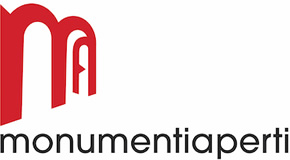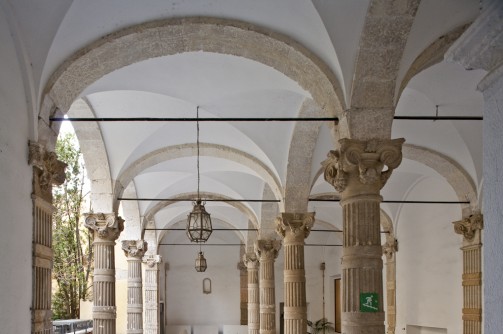The Faculty of Architecture and Engineering of the University of Cagliari occupies two adjoining historic buildings in the Castello district that are among the most representative examples of religious and private architecture still visible.
Mauritian Complex
Located at the top of Via Corte d’Appello between the churches of Santa Maria del Monte and Santa Croce, the former Jesuit College followed the fate of the Society until 1773, when the order was suppressed and the convent passed to the Savoy state. Later the complex of buildings was dismembered and the College was expanded by Piedmontese architect Antonio Felice De Vincenti between 1725 and 1773. It was during this period that it was connected to the other building by a portico. It first became the headquarters of the Royal Printworks, located in 1775 on the ground floor of the building and active until 1848. Canon Giovanni Spano recalls that a type foundry was also installed there. Later the premises housed the Monte di Pietà, the Royal Archives between 1776 and 1849, the Royal Hearing and then became until 1940 the Court of Appeals, hence the street’s name. In 1941, the University of Cagliari purchased the premises.
Cugia Palace
The main elevation of the Palazzo Cugia, or Palazzo Nieddu, overlooks Via dei Genovesi, a street that has always had importance in the building fabric of historic Cagliari, evidenced also by the name it had assumed in Spanish times: Calle de los Palacios. The birth in Castello of a new building type, the aristocratic palace, dates back to the 19th century, thanks in part to the work of architect Gaetano Cima, who was actively involved in the process of Cagliari’s urban transformation. The Cugia Palace fits into this new trend. It is probably the work of Savoy architect Giuseppe Viana in the second half of the 18th century and then renovated in the 19th century by Cima. The palace stands out for its considerable bulk, occupying almost the entire block at the corner of Genovesi Street and Santa Croce Street. The northern wing is now owned by the University of Cagliari and has undergone major restoration.









